Electric scooter speed: what is it and what does it depend on?

The scooter has been considered the preserve of children and adolescents for decades. As electric scooter models emerge and evolve amid the growing concern for the environment in the form of moving away from private cars and even public transport in favor of eco-friendly bicycles and electric scooters, this two-wheeled iron horse has gradually become a popular means of commuting to work.
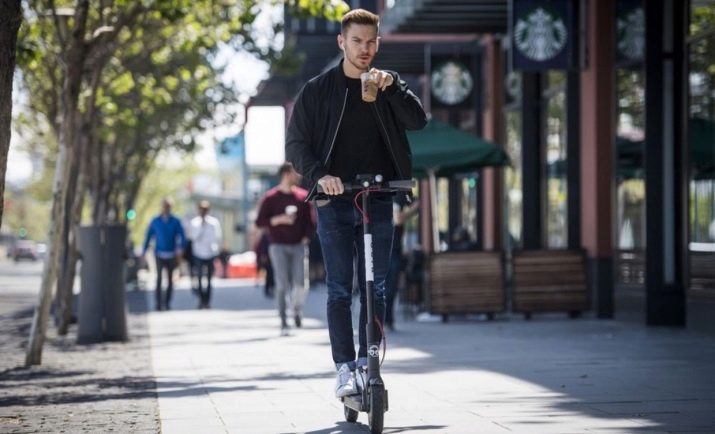
Of course, this is a purely urban vehicle, and you can't go too far on it without recharging, but sometimes you have to wind many kilometers even around the city, and you want to spend as little time as possible on it. In addition, fans of fast driving are ready to test almost anything as a racing mechanism, therefore many people are interested in how much this unit accelerates.
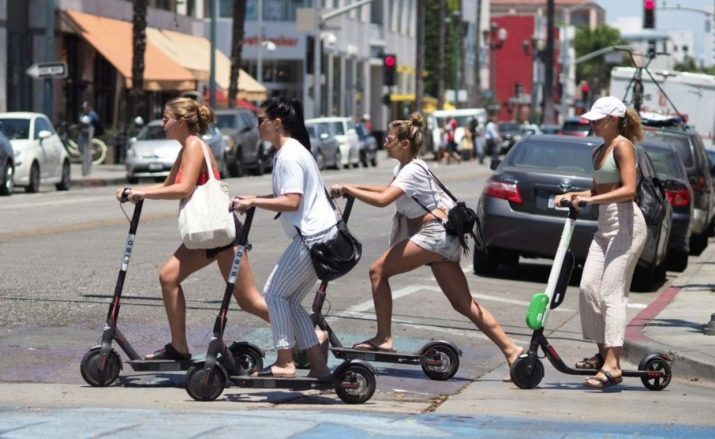
Maximum
Unfortunately, there is no officially recognized speed record for an electric scooter, if only because an ordinary unit of this type is not equipped with a speedometer. In addition, manufacturers usually do not strive to create a truly fast electronic assembly, and they have two good reasons for this.
- Danger to the passenger... It is difficult to think of such a form of transport, on which the rider would be even less protected than on a scooter. The maximum that can be thought of for safety is the minimum "set of a cyclist" of a helmet and elbow pads with knee pads, but at high speed they will certainly not save you from injuries.In addition, a scooter with a motor, in contrast to the same bicycle, is much more difficult to control on steep turns, therefore manufacturers prefer to set a relatively low maximum speed for the device.

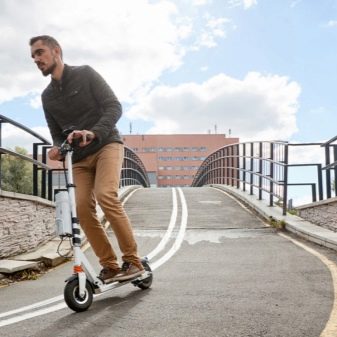
- Increase in mass with increasing speed. An ordinary mechanical scooter is quite light transport, it is convenient to overcome obstacles and move up stairs with it, but in the electric version the battery is a priori the heaviest part. Unfortunately, in most cases there is a direct relationship between the capacity of the battery and the power supplied by the motor, and how well the vehicle picks up speed depends on the latter. Accordingly, the existing high-speed models weigh quite a lot and are therefore inconvenient, but you can make them even faster, but then they will become completely inconvenient.
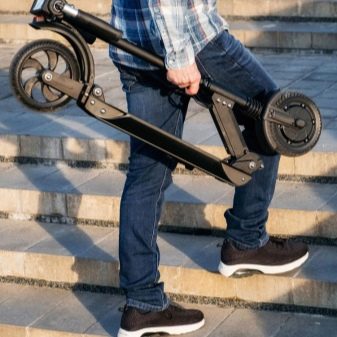

Considering all of the above, you should not be surprised that by default the factory scooter (and even then not everyone) develops on electric traction at best, 60 km / h, and even then in the presence of ideal conditions, which will be discussed below.
However, in our country there are enough folk craftsmen who want to remove the software speed limit and increase it through some modernization of the device, thanks to which more serious 80 and 90 km / h are already achieved. An unofficial record and generally recognized benchmark for each modernized scooter can be considered 100 km / h, but the owner can accelerate so much only if he trusts 100% both the quality of the road, which should be perfectly flat, and his ability to drive in such conditions.

What factors affect the maximum speed of a scooter?
The concept of maximum speed for a particular model is somewhat arbitrary - usually we mean the average maximum speed, which is relatively easy to achieve, but it happens that the manufacturer deliberately overestimates the numbers, and the declared maximum can be achieved only under ideal conditions. To understand how to squeeze everything out of an electric scooter, let's consider what the speed of movement depends on.
- Motor characteristics... This is almost the main criterion, which is one of two consistently affecting speed. Power and torque is the power reserve of the transport, they do not change under any circumstances (except for modernization with the replacement of parts). Expecting to drive as fast as possible, in any case, you should pay attention to those models that have the best indicators of these characteristics.
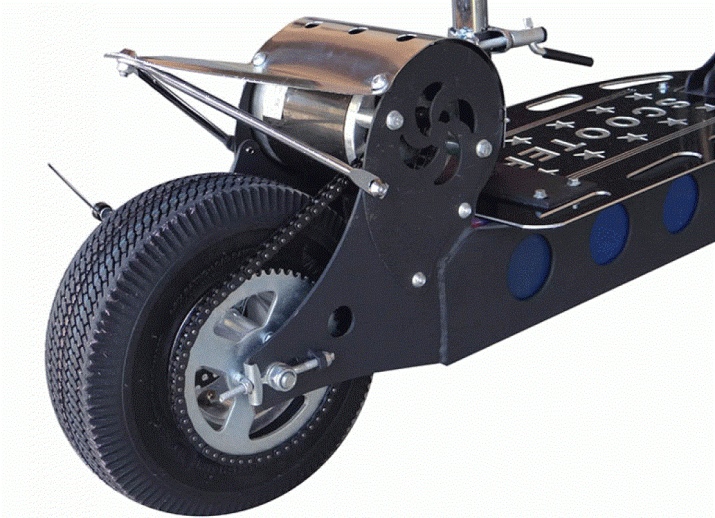
- Wheel diameter. The engine spins the wheels up to a certain number of revolutions per second. It is clear that a scooter with small wheels will have a shorter distance traveled than a model with a larger diameter. Of course, the larger the wheels, the heavier they are, and the more difficult it is to turn them, however, the factory manufacturer usually takes this moment into account and makes the engine power appropriate.
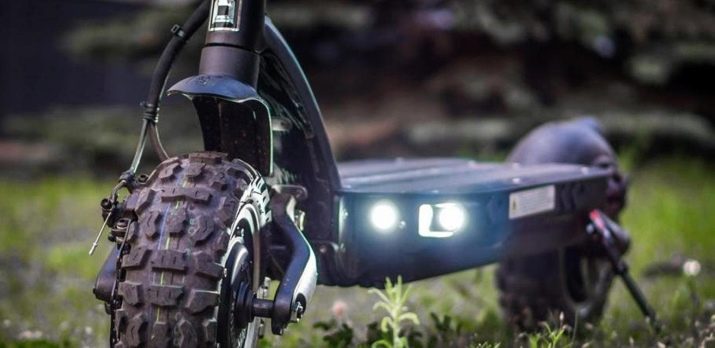
- Vehicle and passenger weight. The total mass of a moving vehicle greatly affects the speed of movement - if it is high, the friction force with the road surface increases, and you will not go so fast. A fast electric scooter should be light on its own, without losing any other ride quality.
If you load an already difficult model not only with yourself, but also with a huge backpack, you should not be surprised that it barely rides.
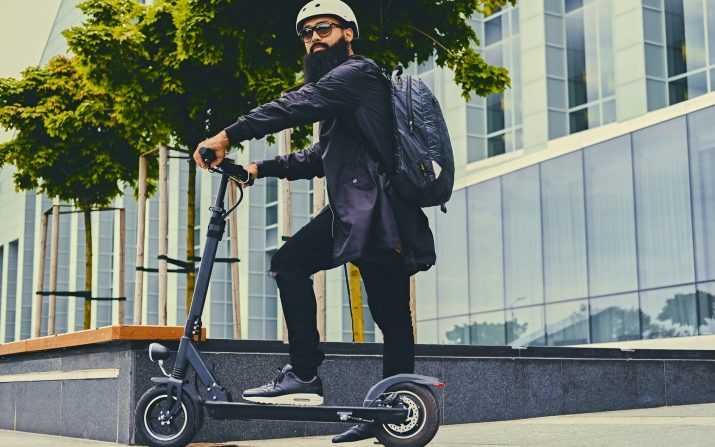
- Features of the road surface. If the road is perfectly smooth, the scooter literally glides along it, without experiencing much resistance, and this, of course, is a huge plus for transport. Whether the case is a viscous coating, which allows some subsidence of the scooter and the wheels sticking in at least minimal holes formed under its own weight. In addition, the slope also matters - as it is much harder to go uphill than downhill, so the electric motor will spend much more effort when climbing.

- Headwind... Even this seemingly insignificant factor affects speed as it creates additional drag. On its own it is usually not as powerful, but coupled with imperfect road surfaces and uphill climbs, the result can be depressing for someone in a hurry.
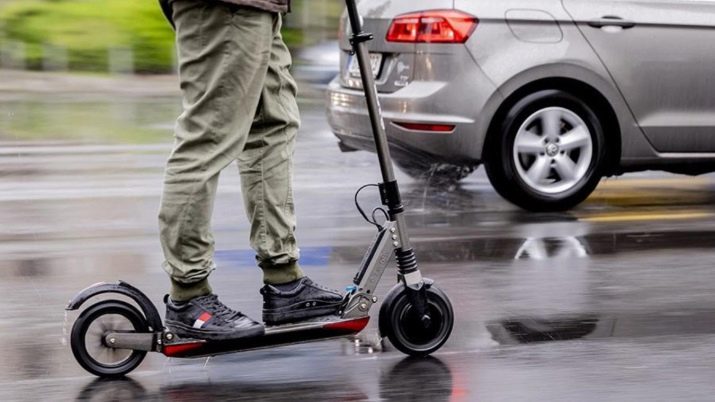
What speed do you need?
The reasons why manufacturers do not produce truly racing scooters have been described above - it remains to understand how to choose a specific model for their tasks, because even the declared 60 km / h is quite a lot for short trips around the city. There is a special classification of electric scooters in the context of who is driving - it also contains information about the normal power of such a vehicle. Experts advise the following.
- Children. It is generally accepted that 5-10 km / h is the ceiling for them. In fact, this is an adult's walking or a leisurely run, but for a student who is just learning, more is definitely not needed. For such an indicator, a motor with a power of about 100 watts is enough.

- Teenagers and adult beginners... For both of them, requests may be more serious than simple "pokatushki" around the yard - for them this is already an option for personal transport. At the same time, such drivers usually lack experience and endurance, because a speed above 15 km / h is not necessary for them, which in watt terms is 150-250 watts.
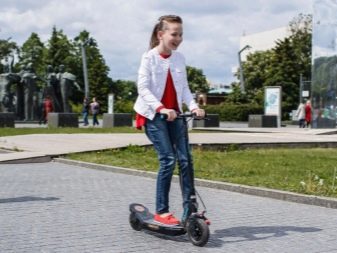

- For adults for everyday life... If you do not surprise you with a scooter, and you need an electric scooter every day, since it replaces a car or public transport, focus on the speed barrier of about 35 km / h - after all, you need not just go to the same job, but hurry. You can expect such agility from a 250-350 W model.
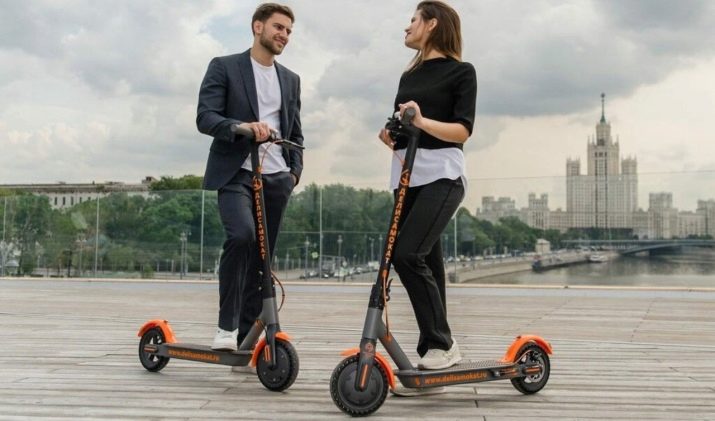
- Racers. If you consider yourself a lover of fast driving and are not simply afraid to accelerate such a fragile structure to such speed, you should pay attention to models that can accelerate to 40-60 km / h. In such scooters, manufacturers often emphasize that they do not lose their cruising speed even in adverse conditions, and therefore their power is impressive - usually it ranges from 700 to a mind-blowing 2000 watts.
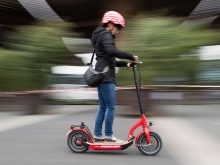
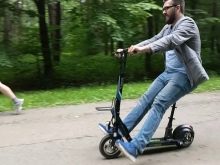
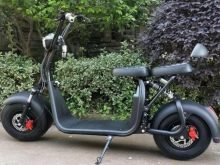
How to upgrade a vehicle?
No matter how hard you try to choose the most advanced electric scooter, it will most likely happen that the declared characteristics are somewhat exaggerated. For example, with a power reserve of 90 km, the battery is really only enough for 60-70 km, the unit does not necessarily reach the maximum speed at least 2-3 km / h, and with a half-discharged battery, problems begin in any driving mode.
For this reason, many craftsmen find it prudent to assemble an electric scooter on their own in order to adjust its parameters, or to upgrade a model purchased in a box.
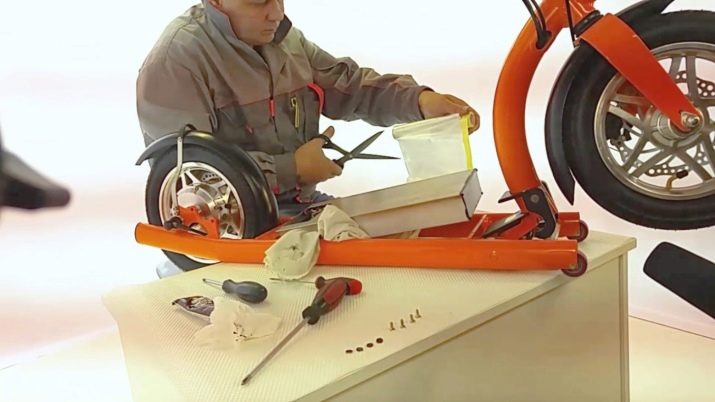
To increase the "endurance" of the scooter, you must purchase and install a more powerful battery for it. The difficulty lies in the fact that many models have individual dimensions, and it is extremely difficult to find a model of the same capacity, but the same dimensions. It is good if the configuration of the case involves the installation of additional batteries in special cells - in this case it will be much easier to experiment.

As for the engine, in almost all cases it will normally survive an acceleration of about 1.5 or even 2 times higher than the factory standard, especially if you don’t mock the homemade product, riding it uphill on rubble and in the opposite wind. Another thing is that the wheel motor controller has certain limitations that do not allow the scooter to accelerate more than to the “normal” speed set by the factory. Hence, the essence of the modification is either to replace the controller with another, or you will have to thoroughly re-solder the original board.
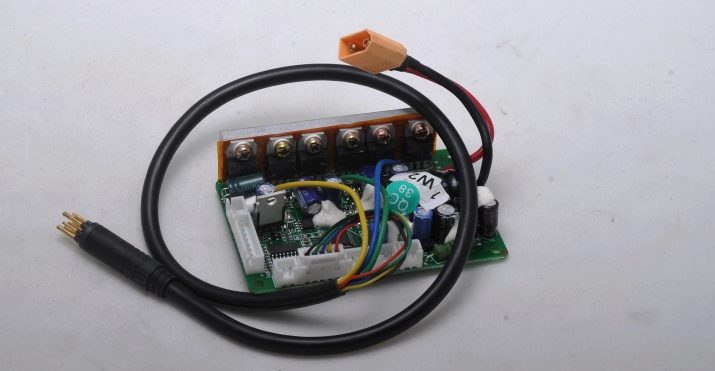
Please note that self-alteration of the scooter is not only fraught with its non-functionality, but also leads to the loss of warranty.
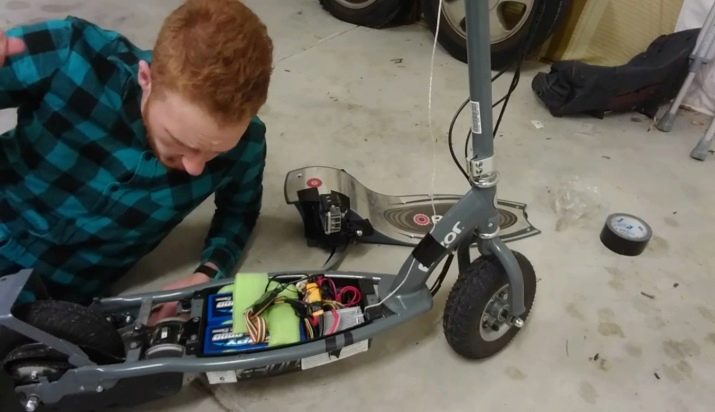
You will learn more about what the speed of an electric scooter is by watching the following video.








